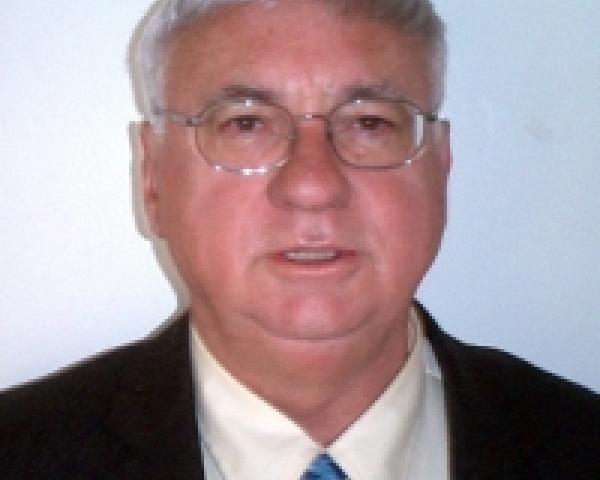What if you call 911 during an emergency medical situation and no trained emergency medical technician (EMT) and ambulance responds to the call? This scenario is a very real medical crisis facing rural America today.
What if you are unconscious or extremely disoriented during a medical emergency when EMTs arrive? Virtually every emergency room physician has to handle such a patient during every shift in a community hospital.
NBC national news recently ran a lead story about the EMT shortage that threatens rural communities across the country. Roughly 70% of EMTs in rural America are unpaid volunteers with full-time jobs and families to take care of. Their numbers are rapidly dwindling, causing a terrifying crisis where 57 million people face the risk of losing vital emergency medical services.
In many small towns, there is no local doctor, and the EMT/ambulance community serves as a front-line safety net. This crisis is exacerbated by the fact that EMT services are not funded in 39 states. As much as 60% of local EMT ambulance services are typically paid for through community fundraising, such as spaghetti dinners and fish fries, because states don't considered EMTs “an essential service” like police or fire. Try telling that to the person who just had a stroke or heart attack.
In the case of a stroke, which is the second leading cause of death worldwide, a person receiving treatment within three hours of the onset of symptoms has the best chance of not only survival but living a normal daily life. The longer a person must wait for medical care during an acute medical event, the less likely that the person will have a positive outcome.
What if you call 911 during a medical emergency such as cardiac arrest and nobody shows up? People who could have been saved will die.
It is estimated that one third of all emergency medical services in rural America are in danger of closing due to the lack of funding.
The system designed to save American lives needs a rescue now. It is time for the federal, state and local governments to respond to what medical experts describe as a dire situation.
See also: Musings on the Future of Driverless Vehicles
My second scenario, in which a patient arrives unconscious but with no visible signs of trauma, is so common that emergency rooms physicians have a shorthand term for it: AMS, or “altered mental states.”
With AMS, the emergency room physician is essentially flying blind as to the root of the medical emergency. The patient could be facing any number of underlying medical problems. Has the patient suffered a stroke, heart attack, seizure, serious infection, allergic reaction, diabetic coma or overdose of prescription or illegal drugs?
All these potential medical issues are just the tip of the iceberg faced by the ER medical staff. The ER physician must do a rapid assessment of the ABCs: patient’s airways, breathing and circulation, including pulse and blood pressure. The first few minutes may be critical.
The rapid assessment is known as DON’T. Does the patient need Dextrose for diabetic shock? Does the patient need Oxygen to the brain? Does the patient need Narcan due to an opiate overdose? Does the patient need Thiamine due to alcoholism or encephalopathy?
DON'T covers immediately life-threatening conditions that can cause a patient to be in AMS, but that an ER physician cannot always find. Typically, ER physician’s end up ordering a lot more lab tests, EKGs, CT scans, etc. just to confirm a suspected diagnosis. The first few minutes are focused on the array of things that may cause AMS that can also kill you quickly.
The average time to complete comprehensive medical testing in the ER is six hours. But what if ER physicians and staff knew your medical history and who your primary care physician was, had access to your online medical records and knew what prescription drugs and dosage you were taking and what allergic reactions you may be dealing with before you even arrive at the emergency room? Many lives could be saved every day.
What if simultaneously your family, spouse, friends, worksite and babysitter were notified of the situation and what emergency room hospital you were being taking to by the EMTs? Without question, the patient would have a much greater chance of not only a better and less expensive patient experience, but the notifications could save lives and prevent lifelong disabilities.
The average time it takes an ER to contact a patient’s emergency contacts is four to six hours. That statistic includes patients who are fully conscious.
Tim Lally, president and CEO of My Notification Services (MNS), has been working on the development of such a program for what he describes as a “10-year pilot program.” MNS provides enrolled members from a sponsoring organization with a kit that includes a bright yellow emergency sticker, which is placed on the back of a driver's license or other form of identification such as a student ID or insurance card; a sticker for an auto, truck or RV is also provided, along with an option for an array of MNS medical alert bracelets that can be worn 24/7. The enrolled member receives a unique ID number through an online process that allows each member to provide potentially critical medical history and contact information.
Each member then has 24/7 access to update any medical or contact information and the ability to print out any additional personal MNS ID cards. EMTs are trained to look for emergency medical cards or other forms of medical alert information for patients who are unconscious or dealing with AMS. The EMT sees the MNS sticker and calls the 800 number, which is then answered by 1 of 22 call centers around the country and Puerto Rico. The call center operators fax or email all the pertinent medical history, primary physician contact information and insurance coverage to the hospital emergency room in this pre-planned process within five minutes of the initial call, prior to arrival at the hospital ER.
See also: Using High-Resolution Data for Flood Risk
This program can save lives and provide peace of mind and can be sponsored by an endless list of organizations, associations and corporate and union health benefit plans, along with a vast array of insurance programs. I have the sticker in my wallet and my car windshield. You should, too.







